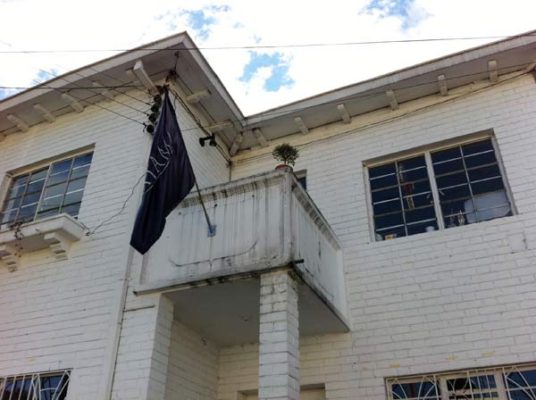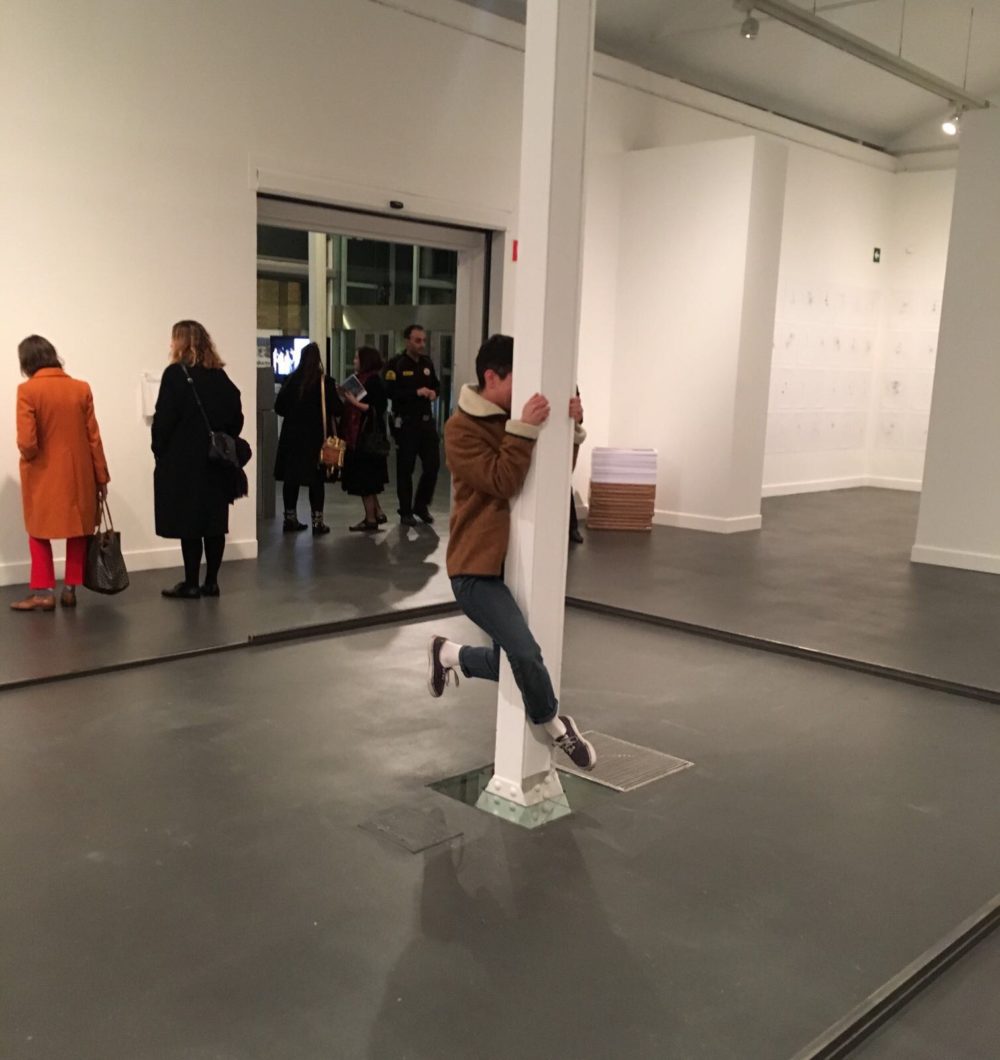Search
To search for an exact match, type the word or phrase you want in quotation marks.
A*DESK has been offering since 2002 contents about criticism and contemporary art. A*DESK has become consolidated thanks to all those who have believed in the project, all those who have followed us, debating, participating and collaborating. Many people have collaborated with A*DESK, and continue to do so. Their efforts, knowledge and belief in the project are what make it grow internationally. At A*DESK we have also generated work for over one hundred professionals in culture, from small collaborations with reviews and classes, to more prolonged and intense collaborations.
At A*DESK we believe in the need for free and universal access to culture and knowledge. We want to carry on being independent, remaining open to more ideas and opinions. If you believe in A*DESK, we need your backing to be able to continue. You can now participate in the project by supporting it. You can choose how much you want to contribute to the project.
You can decide how much you want to bring to the project.

Independent spaces can become the places where art happens. In parallel with institutional dynamics or not, the appearance of independent proposals presupposes that an art context is alive and wants to be present. M I A M I in Bogotá is an example of this.
If we think of the brain as a sort of nomadic humanist laboratory, when it has to decipher a new context, comparison immediately presents itself as one of the most frequent methods at the disposal of thought. Confronting the unknown with what is already known is a habit of understanding. And, however loathsome, comparisons are inevitable. If we think of emerging art as a global phenomenon, marked by the local peculiarities of each territory, the most frequent action, at the first point of contact with a new context, is to proceed by comparing the context with what one already knows.
Accustomed to the strong weight of the institution within the dynamics of emerging art in Catalonia (even being able to grant it the qualification of institutional) it doesn’t seem strange, that spaces like M I A M I in Bogotá, Colombia, are surprising. At first glance, M I A M I is just another house in the attractive district of Teusaquillo. However, the black flag that waves outside already tells us that something particular is cooking inside. The history of M I A M I began less than a year ago in the following manner: a group of artists were looking for a space that would serve as a studio for some of them. They bump into a house for rent and without a second thought they rent it, without really being clear a priori about what to do with the space. At this point comparative thought reminds us that in cities such as Barcelona, the legal-economic exigencies when renting a space are so great that to proceed as informally as the founders of M I A M I did would result, if not unimaginable, fairly implausible.
The process of establishing M I A M I as an independent space for the production, exhibition and promotion of contemporary art, is inverse to the usual theoretical logic, according to which projects come before the spaces where they will take place. This foundational peculiarity also serves, in passing to comprehend that M I A M I is still going through this process of testing, examining and transformation. And this is not a weakness, but a strength. But lets go by parts.
M I A M I functions as a space for production, thanks to the artists’ studios that are located inside, which also provide the source of income fundamental for covering, at least, the cost of renting the house. M I A M I functions as an exhibition space thanks to the exhibitions that it produces with an agenda that, even though it is more or less planned, permits the spontaneous inclusion of other external projects. M I A M I functions as a promotional space thanks to the presentation and launching of publications and the projection of films in the format of a film club. M I A M I also functions as a space for discussion. Internal, if we consider the constant process of revaluation by its members; external, with the introduction of open debates surrounding each one of the exhibitions held on the day of the opening.
The fact that inside the house there are studios where artists produce work could lead one to think that this internal production is what sustains and builds the exhibitions. Nothing is further from reality. Although the politics of M I A M I don’t exclude the “in house” artists from exhibiting, its conduct is more inclined to introduce external material, with the aim of stimulating a space that we could qualify, assuming the problematics of the term, as open. It is true that every artist collective is formed of people and that they relate according to determined synergies that can easily culminate in confusing self-management and autonomy, with an exclusive endogamy. But in the case of M I A M I, this possibility seem to endeavour to dissolve itself, as within its walls we don’t just find artists. There is also space for designers and creators of other disciplines, who also intervene in the internal debate about a conceptually porous project.
Each artistic context has paradigms, issues, a debate and a search for its own solutions. Listening to the instigators of M I A M I and reading critical projects such as Esfera Pública (Public Sphere), the variety and heterogeneity of independent spaces dispersed around Bogotá makes the current discussion gravitate, not towards the possibilities and limits of the art institution, but towards the adjudication of categories such as independent and/or alternative amidst the diverse spaces that are arising. The demand from a critical position, in the face of this proliferation of independent spaces, is for the establishment of a reflexive dialogue between the different projects, and at the same time a revision of the defunct spaces that arose (and perhaps disappeared) out of their radical loyalty to the independent. As Gabriel Mejía, one of the five “founding partners” of M I A M I, pointed out, one has to be aware that the majority of projects of this type “are short-lived” as they don’t stand out for their longevity as much as for their activity.
The recent interest of state politics in participating in the financing of these spaces of production and circulation has caused controversy to enter the dialectic surrounding the independent with regard to contemporary art in Bogotá. In the specific case of M I A M I, which recently won one of these state grants, these governmental impulses were not exempt from a certain initial distrust at the moment of presenting the project to the competition. One already knows that money rarely comes free, without collateral interests or exigencies. And that not in all parts has the production of art had a tradition of incentives for financing with public money. Suspicions about the interest of governmental policies in the material of art aside (when they are interested, why, and when they are not why not, the mistrust is constant), in Bogotá state attention is re-orientating towards artists’ spaces rather than the classical formats of open submissions for production and international residencies that we all are familiar with.
If there is something that currently characterises contemporary art institutions it is the interest, study and reflection upon one of the major components involved in the cultural ecosystem: the public. So that as well as the determinant ideology behind each institutional space, there are strategies for action for the formation of possible publics. Consider, for example, the introduction of public programmes in many contemporary art museums where the creation of a para-academic discourse is as important as its exhibition programme. Even though when we consider independent spaces, the first thing that comes to mind is the fascination with the autonomous impulse, the question of the public is also not so distant for them. For the moment and due to the more or less precarious conditions that can influence the development of independent art spaces, this formation of publics, that comes hand in hand with a better or worse planned strategy, doesn’t seem to be as prevalent as it is within the institutional arena. One of the risks that these spaces run is that instead of having a critical and assiduous public, they only manage to have the type of sporadic visitor, in addition to close friends, who attends places that offer the charm of the new, that are fashionable and talked about in the small circles of artistic society. The members of M I A M I, for example, have realised that at the moment they seem to have two large sectors of public: one that comes to discover the exhibitions and one that regularly attends the film club projections. The question here, for them, is how to make these two types of public interrelate and become interested in all the activities in the house.
Following the example of M I A M I, of whom we could say that “they began the house with the roof”, this article could end where the majority of things begin. The name. M I A M I, evidencing power, owes its name to the famous North American city, and despite the geographic contradictions, provably the most important city in Latin America and the dream of many Latin Americans. However, in Teusaquillo they are thinking more about a conceptual relationship than of emigration to artificial paradises. M I A M I appropriates Miami in the form of a resistance to the hermetic definitions that inhabit both places.

artwriter_curator_esnorquelmaker_chocolateresearcher_technodancer__bikeenthusiast_coffeeaddicted_
"A desk is a dangerous place from which to watch the world" (John Le Carré)